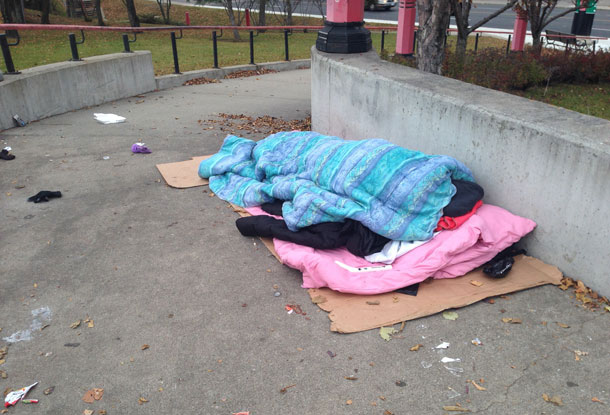
THUNDER BAY – “Youth homelessness is an equity issue. All youth, regardless of their identity or poverty, deserve access to safe, affordable, and appropriate housing and health care. These are human rights, said Kaitlin Schwan, Postdoctoral Fellow at the Canadian Observatory on Homelessness. “The fact that Indigenous youth across Canada disproportionately experience homelessness and poor mental health demands an urgent response from all levels of government.”
Governments must focus on the mental health challenges faced by young people in Canada in order to effectively address youth homelessness, says a policy brief released today by researchers and community groups.
“Rather than invest in prevention and rapid re-housing, our response to youth homelessness has been to wait until young people face acute crises before we do something. It is time to change our approach,” said Stephen Gaetz, York University Professor and Director of the Canadian Observatory on Homelessness. “This is an opportunity for the Canadian government to become an international leader in addressing youth homelessness.”
A tour around Thunder Bay would witness many places across the city where year-round the homeless are gathered. While summer conditions might only present issues with mosquitoes and blackflies, winter presents serious risk.
Toronto realizes the dangers that extreme temperatures can have, especially on homeless people. The city has extreme cold and extreme heat advisory programs in place.
Thunder Bay as a northern community sees temperatures far in excess of the cold weather in Toronto, yet does not have any set programs in place to protect the lives of homeless people who live on our streets. There is of course the SOS service that operates out of Shelter House. That program stops at 2:00AM after a twelve hour shift. It is a start but is nothing like the program set up in Toronto.
Dealing with chronic homelessness, including physical and mental health issues has, in Thunder Bay seen people sleeping in the alleys and along the side of the Shelter House.
In some cases in the past year, people have been left outside in the rain with staff simply walking away.
In some cases in Thunder Bay the effort has been simply to find and gather up the blankets and belongings of the homeless persons and dispose of them.
The recent shutting down over funding issues of the SOS vans has closed down yet another way to help the people on Thunder Bay streets. In someways it is a symbol of how our community sees the issue of homelessness.
There really isn’t a safety net for youth who find themselves homeless. Often those youth end up at best couch surfing, and at worst working a street corner or going missing.
The report by the Canadian Observatory on Homelessness, based at York University, and A Way Home Canada, calls on federal, provincial and territorial governments to implement youth homelessness strategies that recognize marginalized and homeless youth are at higher risk of mental health challenges, poor quality of life, and suicide.
The first national study on youth homelessness found that 85 per cent of young Canadians who are homeless are experiencing a mental health crisis, 42 per cent reported at least one suicide attempt, and 35 per cent reported at least one drug overdose requiring hospitalization.
Adverse childhood experiences such as abuse, systemic problems including barriers to accessing services, and structural issues such as racism often combine to worsen the mental health of youth experiencing homelessness. LGBTQ2S and Indigenous youth experiencing homelessness report markedly poorer mental health and face numerous barriers to accessing supports.
Federal and provincial governments have made significant investments in homelessness and mental health recently. The federal government announced a 10-year, $5 billion dollar investment in mental health services earlier this year and most provinces and territories have now established new mental health transfers with Ottawa. The policy brief calls on the federal government to implement a youth homelessness strategy with a special focus on mental health and wellness, and for provincial and territorial governments to implement more targeted strategies.
“With this new federal investment in mental health, communities across Canada are positioned to make real progress on this issue. The key will be ensuring services are coordinated and communities set real, measurable targets for progress,” said Melanie Redman, Executive Director of A Way Home Canada.
The policy brief outlines six recommendations for federal, provincial, and territorial governments:
- Develop and implement strategies to prevent and end youth homelessness, supported by targeted investments;
- Invest in systems integration to address the mental health needs of youth experiencing homelessness;
- Prioritize and invest in program models that focus on prevention and rapid exits from homelessness for youth;
- Adopt a youth-centered approach to addressing youth homelessness, grounded in human rights;
- Ensure that all strategies and program responses address the unique needs of diverse youth experiencing homelessness; and
- Develop a national research strategy focused on youth homelessness, and invest in knowledge development and data management, in order to advance an integrated systems response to youth homelessness.





